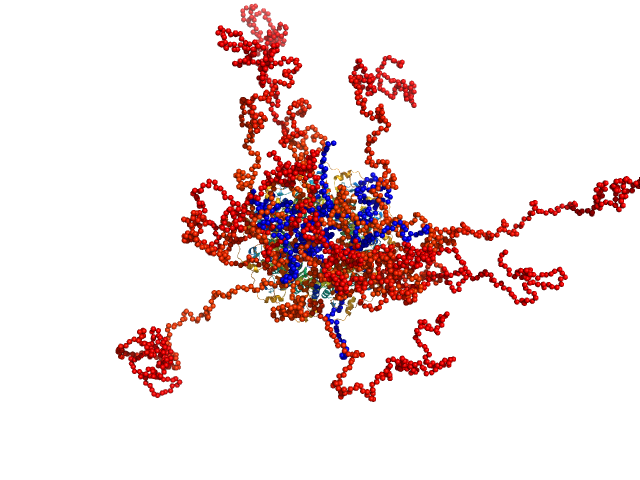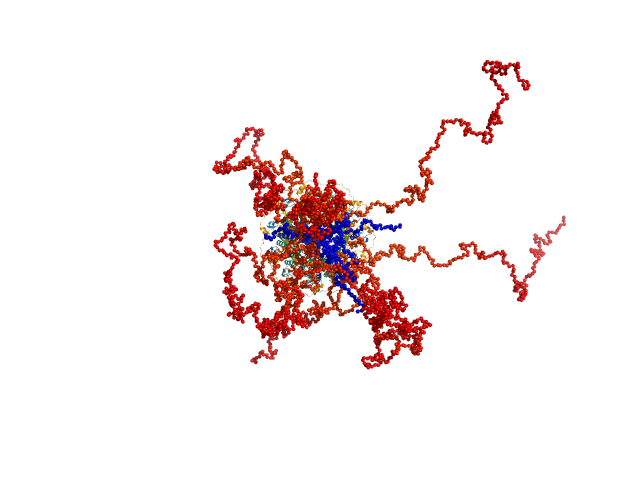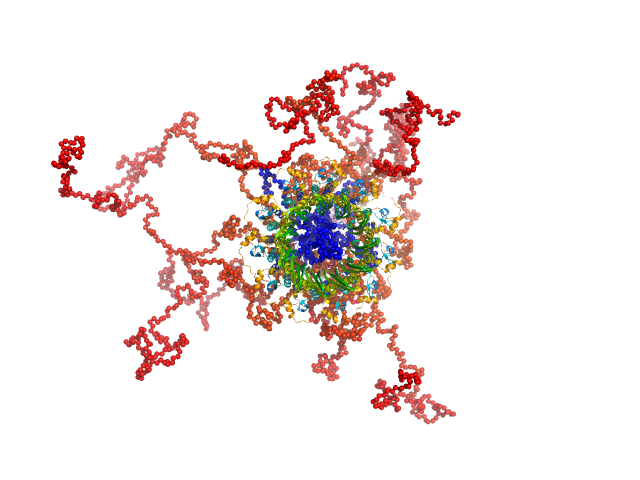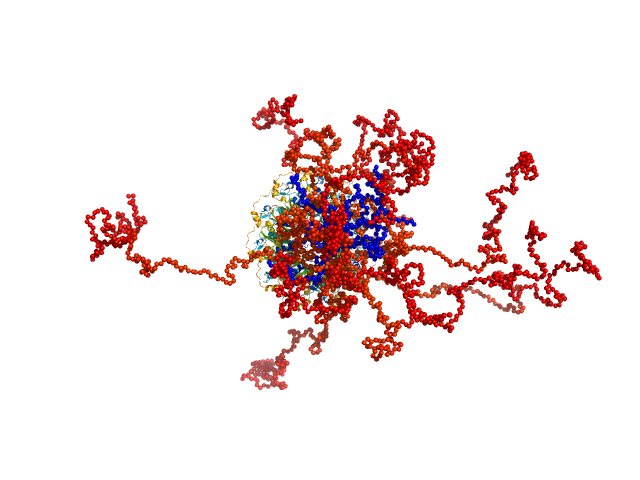|
Synchrotron SAXS data from solutions of His-Tagged full length DNA repair protein RAD52 in 20 mM Tris pH 7.5, 250 mM NaCl, 1% glycerol, were collected on the BM29 beam line at the ESRF (Grenoble, France) using a Pilatus3 2M detector at a sample-detector distance of 2.8 m and at a wavelength of λ = 0.099 nm (I(s) vs s, where s = 4πsinθ/λ, and 2θ is the scattering angle). In-line size-exclusion chromatography (SEC) SAS was employed. The SEC parameters were as follows: A 50.00 μl sample at 1.3 mg/ml was injected at a 0.07 ml/min flow rate onto a GE Superose 6 Increase 3.2/300 column at 20°C. 600 successive 2 second frames were collected. The data were normalized to the intensity of the transmitted beam and radially averaged; the scattering of the solvent-blank was subtracted.
|
|
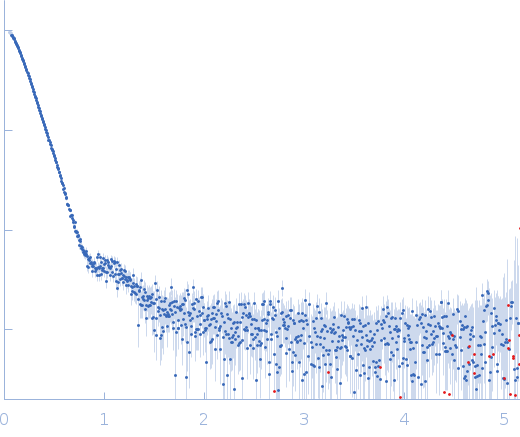 s, nm-1
s, nm-1
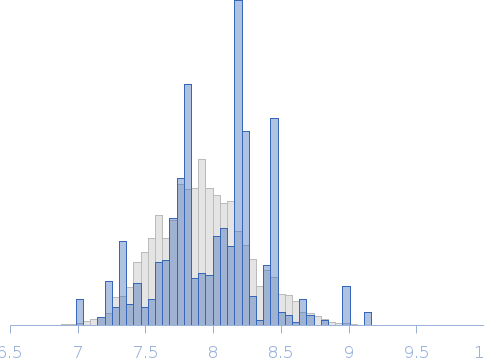 Rg, nm
Rg, nm
